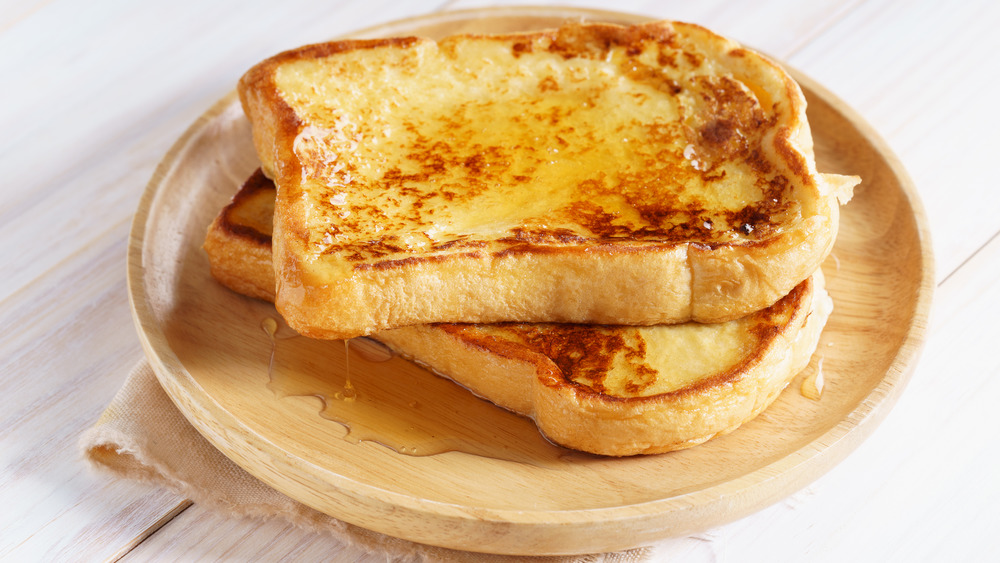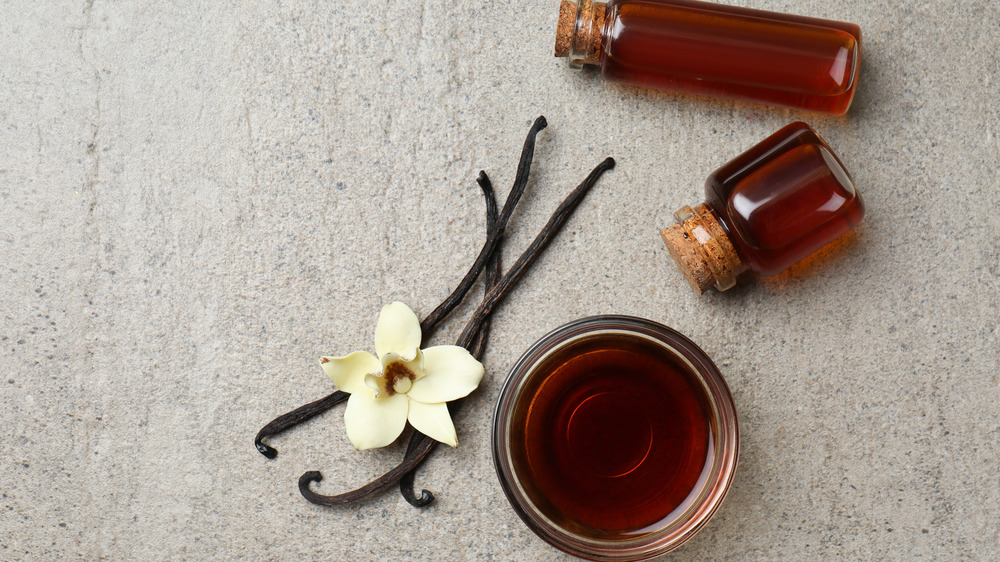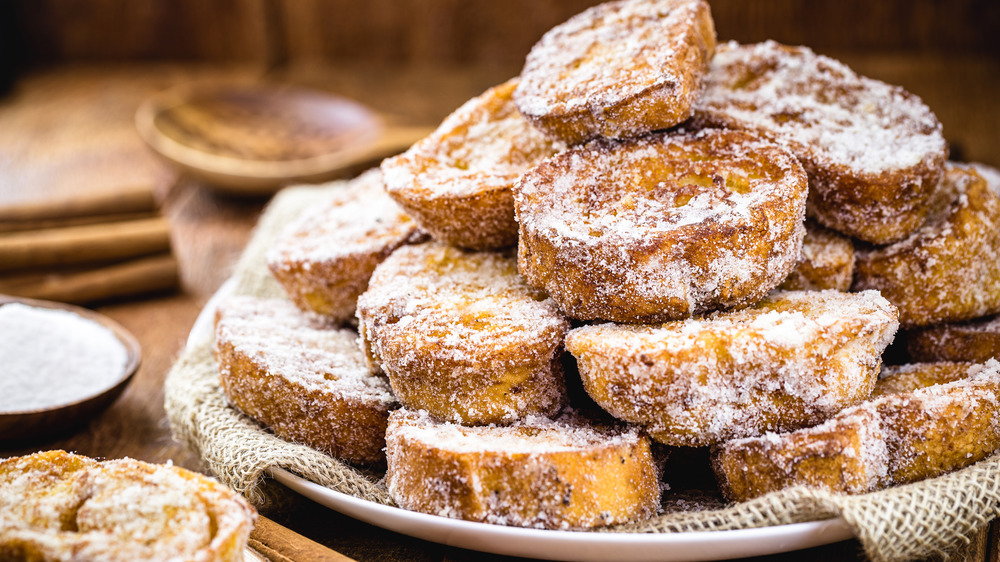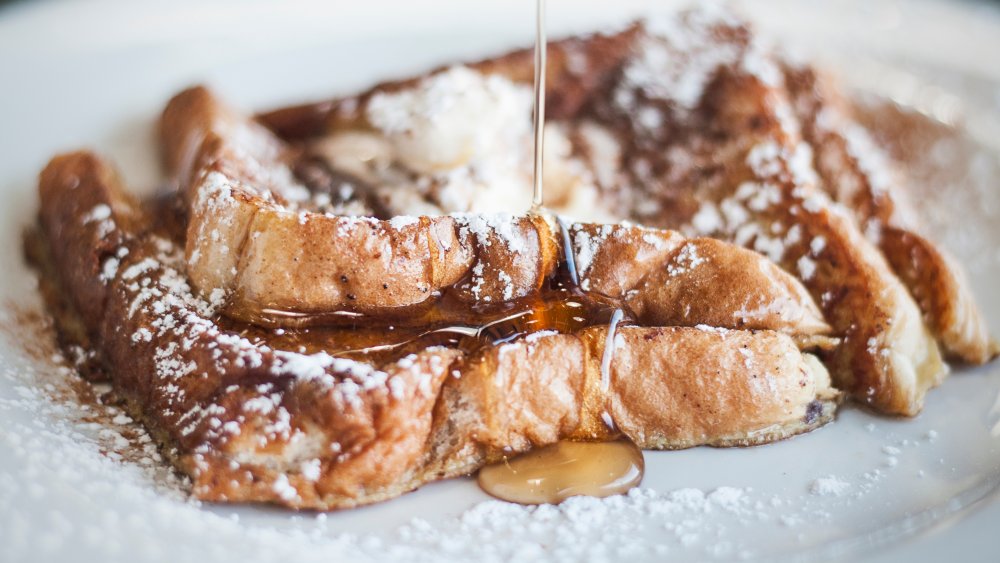The Secret Ingredient You Should Be Using In Your French Toast
We've all woken up, put on our robes, and wandered to the kitchen to make ourselves something special for weekend brunch. We look in the fridge and spot milk, eggs, and bread. A brilliant vision of French toast emerges in your mind's eye, and you think to yourself, "The best French toast ever made is about to be crafted." But after diligently whipping up what you had planned to be the perfect start to your day, you are left wanting more.
French toast is one of those dishes that can be as plain and boring or as exciting and highbrow as you want it to be, depending on how you make it. At its most basic, it is bread soaked in a beaten egg and milk before it is fried, but at its height, French toast can pay homage to the dish that inspired it — pain perdue, which can still be found in diners across New Orleans (via The Pudge Factor).
French toast sings with the addition of vanilla extract
Pain perdue — or "lost bread" — gets its rather forlorn name from the stale bread with which it is made. And unlike homemade French toast, which is frequently made with more slender pieces of pre-sliced bread, Pain Perdue recipes call for hearty chunks of day-old baguette or thick French bread. This day old bread isn't just dipped into a hastily pulled together egg and milk combo, but added to a carefully thought out mixture that includes cream and milk, eggs... and a generous splash of vanilla extract. The addition of vanilla really elevates the cream and egg mixture into something that sits closer to a sweet custard.
Even if the thought of pain perdue isn't something that appeals to you, your home made French toast can still be improved with the addition of vanilla extract, which can bring life to sweet treats the in much the same way salt does with savory ones. As Swedish chef John Demetrios puts it to HuffPost: "I like to think of vanilla as a spice that enhances sweetness — the the way salt brings out the best of savoury ingredients. Vanilla adds aroma in baked treats as well as custards and creams. I also think it compliments the flavours of eggs and sugar incredibly. Many chocolate producers add vanilla to their finish[ed] products, purely to give a more rounded feel on the palette."
Upgrading your French toast takes little extra effort
Upgrading your French toast to a pain perdue doesn't take much more than effort than you think. If no cream or half-and-half is on hand, The Spruce Eats says milk will do the trick. Add to that your eggs, vanilla extract, and salt, as well as two other flavor enhancers you might be tempted to treat as optional extras — but which can really take your French toast/pain perdue game to the next level: cinnamon and allspice. Different cooking sites have different thoughts on how long the bread should sit in the custard mix for (Food Network's Ina Garten says four minutes; The Spruce Eats says five to 10). We suggest you use your best judgment based on what kind of bread you're using, as you want it to fully soak up the custard without falling apart and creating a soggy mess.
At this point it might make sense to mention that, although it's expensive, pure vanilla extract is always the best option to add in when you're making anything sweet. Imitation vanilla often has some pretty gnarly ingredients like coal tar, wood pulp, and even secretions from the beaver's castor glands, which unfortunately, are located at its bum. These can all be components of vanillin, the chemical that gives artificial vanilla its flavor (via MyRecipes).
Not all vanilla is the same
Additionally, there is a reason real vanilla is so expensive. The beans are extremely difficult to grow. It can take up to four years for a vanilla vine to reach maturity and once it is mature, the vanilla flowers only bloom for one day of the entire year, which means in order for the vine to produce it must be pollinated during that one day (via Business Insider). Beyond that, in the areas where most vanilla is grown there aren't bugs or birds that are capable of pollinating the plant. 80 percent of vanilla is grown in Madagascar and all of it has to be pollinated by hand on the single day of the year it's blooming. If the weather shifts for the worst, the farmer is out of luck. Furthermore, because vanilla is worth more by weight than silver, it is subject to theft. After undergoing loads of labor-intensive and drawn out work to produce a single harvest, farmers often get their crops stolen. When you take all of that into consideration, $20 for a bottle of the real deal doesn't seem so expensive.
Next time you want to impress your family? Use vanilla as your secret French toast ingredient — just make sure it's the real stuff.



